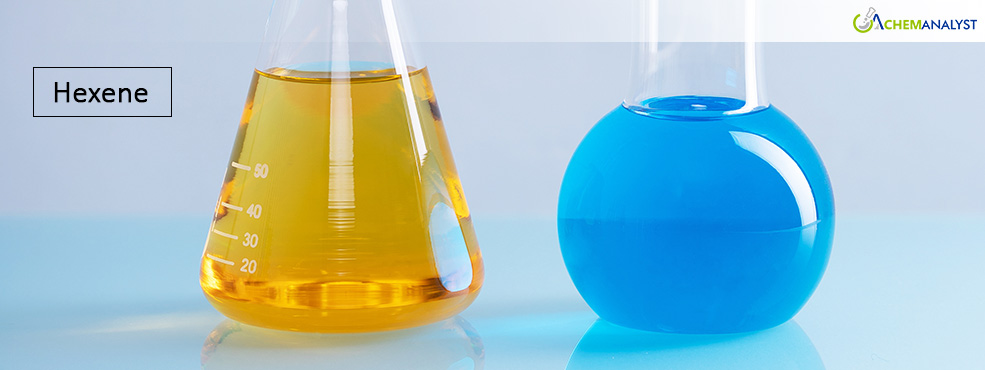European Hexene Prices Find Stability at Bottom: Optimistic Outlook for February 2025
- 03-Feb-2025 4:45 PM
- Journalist: Shiba Teramoto
The European Hexene market started 2025 with prices remaining stagnant at lower levels. This trend reflected the overall weak economic climate and subdued demand for the polymers it is used to produce – namely HDPE and LDPE. The pricing trajectory of Hexene, crucial for manufacturing HDPE and LDPE, was heavily influenced by the broader polymer market and feedstock ethylene costs. Throughout January, the overall demand for polymers, including feedstock Ethylene, remained significantly below typical levels. Converters, facing economic uncertainty and geopolitical issues, minimized stock levels, purchasing only sufficient Hexene to meet immediate production needs. This low demand restricted Hexene prices from rising.
Several factors contributed to this sluggish market. The competitiveness of imported Hexene decreased towards the end of 2024 due to increasing freight rates and a stronger US dollar against the Euro. Despite attempts by some polymer producers to raise prices in January to boost profits, weak demand persisted, preventing price increases from taking hold. However, the availability of Hexene was sufficient to meet the existing downstream demand. was This adequate supply further prevented any price increase.
Weak market conditions resulted from low demand for HDPE and LDPE, the primary products manufactured from Hexene. Converters reduced stock levels for financial reasons before the Christmas holidays, leading to low demand for both HDPE and LDPE. This situation continued into the new year. While HDPE supply remained normal, albeit at a low level, LDPE supply was tighter, primarily because imports were not as competitive, making domestic supply more important. HDPE prices remained largely unchanged till mid-January, reflecting the weak demand and a rollover for the January ethylene reference price. Conversely, LDPE prices experienced a marginal upward adjustment in the later half of January, primarily driven by increased costs associated with US resin imports and the volatility of currency exchange rates impacting the Hexene market.
Multiple ethylene cracker production shutdowns, including planned closures by Eni in Italy and by Dow Chemicals in the Netherlands, and Ineos in France, significantly impacted the overall production capacity. This resulted in a decrease in the overall available production capacity of ethylene, subsequently impacting Hexene production. However, even with reduced output, Hexene supply remained sufficient to satisfy weak demand.
As per ChemAnalyst Pricing Intelligence, a potential price increase for Hexene, is possible in February. This would hinge on sustained crude oil price increases and a potentially tighter supply situation caused by the stronger US dollar making imports less attractive. However, the success of any price increase for Hexene will heavily depend on a significant improvement in the demand across the downstream HDPE and LDPE sectors. Without a substantial increase in demand, the Hexene market is likely to remain sluggish in the coming months, keeping prices at low levels.



